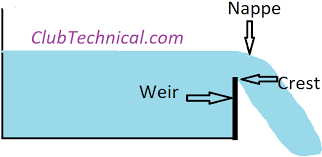Traffic Engineering Design Process
Pre-Design Considerations
Site Analysis
Before creating a design, traffic engineers need to conduct a site analysis to determine what needs the site may have for the area’s traffic. They will need to take note of the surrounding area – businesses, schools, railways, protected lands, etc. – and investigate any local policies that might affect their work.
Traffic Surveys
A traffic survey is a survey conducted by traffic engineers to determine how traffic moves through a particular area. These usually take 2-4 days per intersection to complete and need to occur throughout the day to ensure both peak and non-peak hours are factored in. One of the most popular ways a traffic survey is conducted is with the use of rubber hoses. These hoses run across the road and connect to a meter that counts each vehicle that passes while also determining what type of vehicle it is. These hoses also collect data on what speed the vehicle is going when it passes over the hose.
Traffic engineers will also need to count the turning movements and pedestrian movements in the area. This is usually done in person, but some engineers deploy video technology to try and capture the information needed. The number of vehicles, the type of vehicles, and how the vehicles are moving through the intersection all need to be recorded.
Public Consultation
As a transportation system is built for the public, it only makes sense that the public is considered when a design for a new or improved system is being created. Traffic engineers often work with the public, whether it be through in-person meetings or online surveys, to determine how the public feels about the process.
When creating a design, there are several factors that a traffic engineer needs to consider.
Road Geometry
Road geometry is a major consideration, with decisions being made regarding the lengths and widths of lanes as well as median dimensions and the radius allotted for turns. The biggest thing this will depend on is the type of vehicles that frequently traffic the area. Larger vehicles lead to larger lanes and turns.
Traffic Control Devices
Traffic engineers will also need to consider what traffic control devices will be used in the intersections. These include traffic lights, road signs, and road markings.
Pedestrian Facilities
If there is a high volume of pedestrian traffic through the system, the traffic engineer will need to create pedestrian walkways and decide on if there will be light signals for those walkways.
Bicycle Facilities
Using data collected about the area, traffic engineers will need to decide if bicycle lanes will need to be included in their design. If a school or university is nearby, this is likely to be the case. Many popular areas within cities also tend to need bicycle lanes as many people choose to travel via bicycle over navigating vehicle traffic.
Transit Facilities
Any nearby transit facilities will need to be factored into the system design. Things like parking lots, loading zones, bus stops, and railways will all impact how traffic flows through the area. If these things are ignored, the design will lack allowances for these issues and fail.
Landscaping
Landscaping may not seem like the most important thing to consider when a traffic engineer is creating a design, but it’s still a factor. This is especially true when the engineer is designing for a residential area or an area with a lot of businesses. Aesthetics are important to many people. Some cities may even have policies regarding landscaping and road projects.
Lighting
Traffic engineers will have to decide the lighting needs of the system they create. Taking into account the surrounding area, they may decide to include additional lighting fixtures within their design. For example, if their road project is in an area with very few buildings or other sources of lighting, they may choose to include street lamps along the road to increase the safety of those driving through the system at night.
Signage and Markings
This is one of the more important factors that will need to be considered by a traffic engineer. They’ll need to decide how they will stripe the roads, what markings they will add to the roads, and what signs will be used. This includes exit signs, speed limit signs, and yield or stop signs.
Drainage
It’s important for traffic engineers to keep in mind the drainage of the area they’re designing for. They want to avoid building roadways that will easily flood.
.jpeg)



Comments
Post a Comment